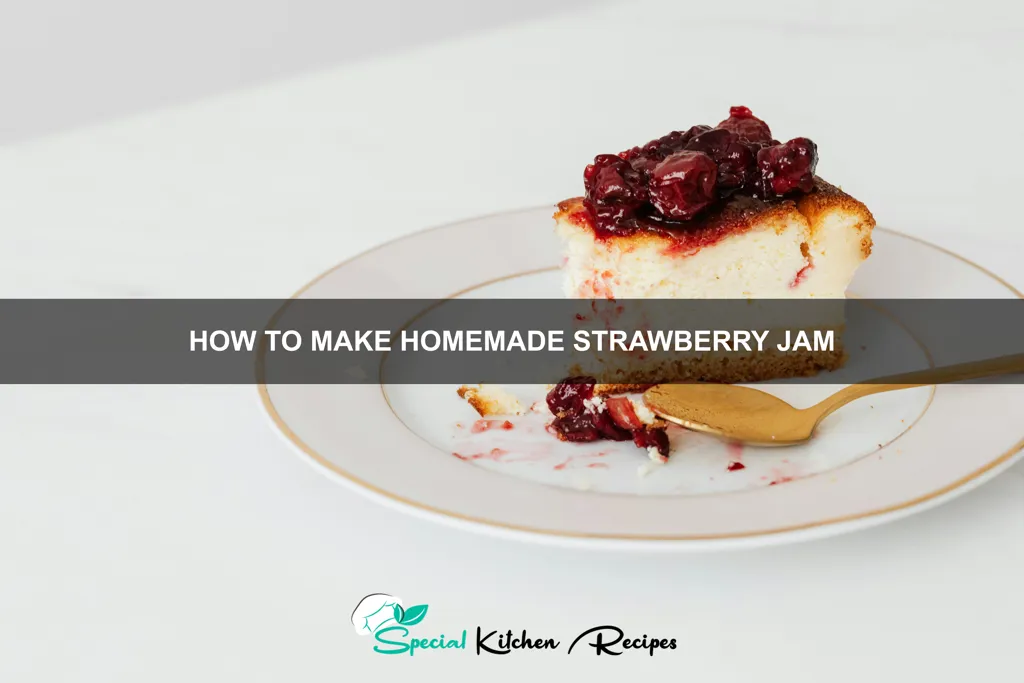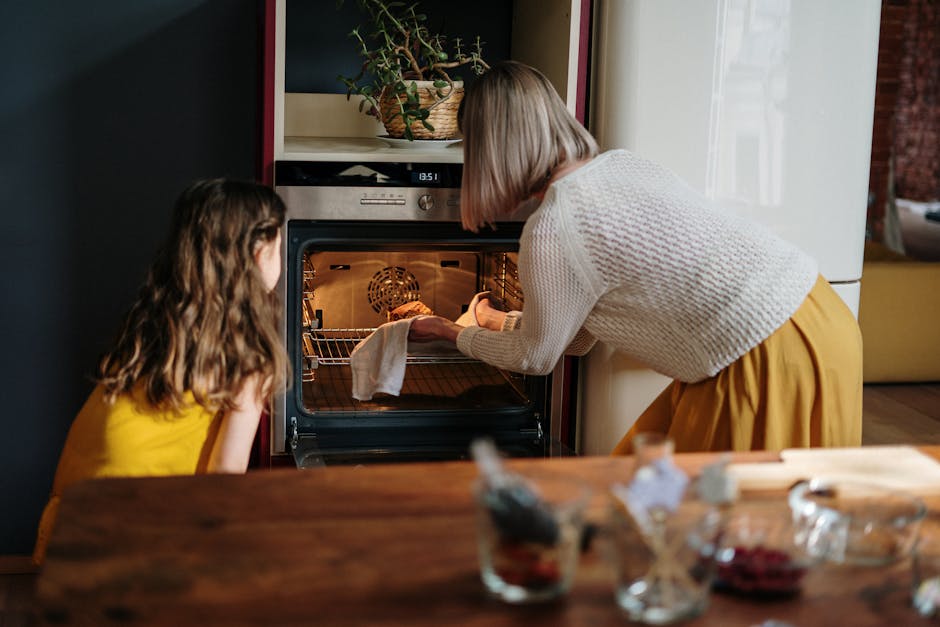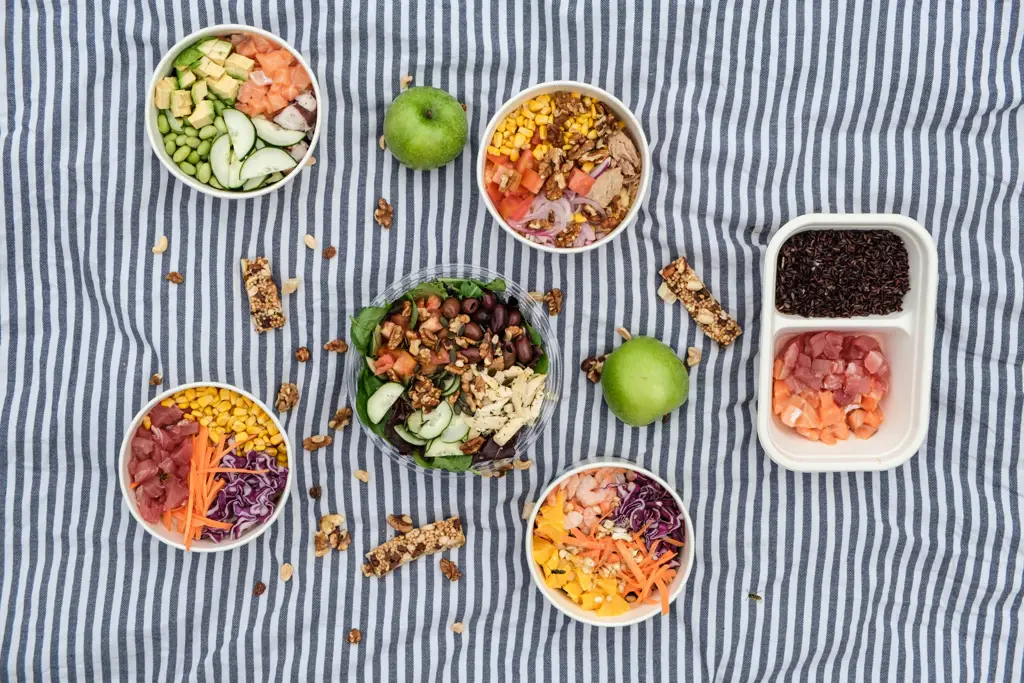The sweet, ruby-red allure of strawberry jam has captivated palates for centuries, its origins shrouded in the mists of time but undeniably linked to the domestication of the strawberry itself. While pinpointing the exact moment when strawberries transitioned from a simple preserve to a beloved breakfast staple is impossible, historical records suggest that preserving fruit in sugar – a precursor to jam-making – dates back to ancient civilizations. The Romans, for example, were known to preserve fruits in honey, a practice that laid the groundwork for future jam-making techniques.
The widespread popularity of strawberry jam, however, truly blossomed during the 18th and 19th centuries, coinciding with advancements in sugar refining and the increased availability of strawberries themselves. The Industrial Revolution played a significant role, enabling mass production and distribution, transforming strawberry jam from a luxury item to a pantry staple in many households. Interestingly, the first commercially produced strawberry jam in the United States emerged in the late 19th century, quickly becoming a breakfast favorite across the nation. Today, the global strawberry jam market is a multi-billion dollar industry, reflecting its enduring appeal.
Beyond its economic significance, strawberry jam holds a rich cultural meaning. It frequently appears in literature, folklore, and popular culture as a symbol of comfort, nostalgia, and childhood memories. The simple act of spreading homemade strawberry jam on a warm biscuit or slice of toast evokes feelings of home and family for many. Statistics show that a significant percentage of households worldwide still make jam at home, highlighting the continued relevance of traditional food preservation methods and the desire for authentic, homemade flavors. This enduring popularity underscores not only the deliciousness of strawberry jam but also its deeply ingrained cultural significance.
This recipe will guide you through the process of creating your own batch of homemade strawberry jam, allowing you to experience the satisfaction of crafting a timeless treat from fresh, ripe strawberries. From selecting the perfect fruit to achieving the ideal consistency, we’ll cover every aspect of the process, empowering you to create a jar of homemade goodness that captures the essence of summer’s sweetness.
Ingredients and Measurements
Making delicious homemade strawberry jam requires precise measurements and high-quality ingredients. The success of your jam hinges on the right balance of strawberries, sugar, and pectin (if using). Using ripe, flavorful strawberries is crucial for a vibrant and intensely fruity jam.
For this recipe, we’ll be making approximately 6-8 half-pint jars of strawberry jam. Adjust the quantities proportionally if you wish to make a larger or smaller batch. Always sterilize your jars and lids before beginning to ensure safe preservation. This involves washing them thoroughly in hot, soapy water, then rinsing and placing them in a boiling water bath for at least 10 minutes.
Here’s a detailed breakdown of the ingredients and their precise measurements:
- Strawberries: 4 pounds (approximately 1.8 kg). Choose ripe, but not overripe, strawberries. Overripe strawberries can result in a runny jam. Gently wash and hull the strawberries, removing the green caps. You can leave them whole, halve them, or roughly chop them depending on your desired texture. Smaller pieces will result in a smoother jam.
- Sugar: 3 cups (600g) granulated sugar. Do not substitute with other types of sugar, as the granulated sugar’s properties are crucial for the jam’s setting. The sugar content helps to preserve the jam and provides the necessary sweetness.
- Lemon Juice: 1/4 cup (60ml) freshly squeezed lemon juice. This adds acidity, which enhances the flavor of the strawberries and helps the jam to set properly. Avoid using bottled lemon juice as it often contains preservatives that can interfere with the setting process. Freshly squeezed is best!
- Pectin (Optional): 1 pouch (1.75 oz or 50g) liquid or powdered fruit pectin. Pectin is a natural setting agent that helps the jam to achieve the desired consistency. If using pectin, carefully follow the instructions provided on the pectin package, as the amount and method of addition may vary depending on the brand.
Accurate measurements are key to successful jam making. Use a kitchen scale for weighing ingredients whenever possible, for the most precise results. While volume measurements are provided, weight is a more reliable measure, especially for the strawberries. Enjoy the process of making your homemade strawberry jam!
Equipment Preparation
Making homemade strawberry jam requires careful preparation of your equipment to ensure a smooth and successful process. Proper sterilization is crucial to prevent spoilage and maintain the quality of your jam for months to come. Let’s start with the essentials.
You will need several key pieces of equipment: eight to ten half-pint (250ml) preserving jars with lids and rings, a large, heavy-bottomed pot (at least 8 quarts/7.5 liters capacity for larger batches), a wooden spoon or spatula for stirring, a measuring cup (liquid and dry), measuring spoons, a jar lifter (to avoid burns), and a funnel (for easy filling of jars).
Sterilizing your jars and lids is paramount. This eliminates any bacteria or yeast that could contaminate your jam and cause it to spoil. The most effective method is to wash your jars and lids in hot, soapy water. Then, place them in a large pot and cover them completely with water. Bring the water to a rolling boil and boil for 10 minutes. Do not overcrowd the pot, as this will prevent adequate sterilization. Once done, carefully remove the jars and lids with a jar lifter and place them upside down on a clean kitchen towel to drain and dry. Keep them warm until ready to fill.
Preparing your pot is equally important. While sterilization isn’t as critical for the pot itself as it is for the jars, it’s still a good practice to wash it thoroughly with hot, soapy water before use. Ensure the pot is large enough to accommodate the strawberries and sugar without overflowing during the cooking process. A heavy-bottomed pot helps to distribute heat evenly and prevents scorching, which can affect the jam’s flavour and colour.
Finally, gather your other tools. A wooden spoon or spatula is preferred for stirring because it won’t scratch the pot. Accurate measuring is essential for successful jam-making, so having reliable measuring cups and spoons is critical. A funnel will help prevent spills while filling the hot jars, and a jar lifter is a must-have for safely handling the hot, filled jars.
Proper equipment preparation contributes significantly to the overall success of your homemade strawberry jam, ensuring a delicious and long-lasting product. Taking the time for this crucial step will save you potential frustration and disappointment later.
Strawberry Preparation (Washing, Hulling, Slicing)
Before you begin making your homemade strawberry jam, proper preparation of the strawberries is crucial for achieving the best flavor and texture. We’ll be working with approximately 1 kilogram (2.2 pounds) of fresh strawberries for this recipe, but you can easily scale it up or down as needed.
First, thoroughly wash the strawberries. Gently rinse them under cool running water, ensuring you remove any dirt or debris. A colander is ideal for this step, allowing for easy drainage. Avoid soaking the strawberries for extended periods, as this can make them waterlogged and dilute their flavor. A quick rinse of about 30 seconds to a minute is sufficient.
Next, we’ll hull the strawberries. This involves removing the green leafy tops. There are several ways to do this. You can use a small paring knife to carefully cut away the green caps, being mindful not to cut too deeply into the strawberry flesh. Alternatively, a strawberry huller tool can be a quick and efficient method. For best results, aim for a clean removal of the green cap, leaving the strawberry intact. Discard the hulls.
Now it’s time to slice the strawberries. The size of your slices will depend on your preference. For a smoother jam, smaller slices are recommended. For a jam with more texture, larger slices are suitable. For this recipe, we’ll aim for approximately ½-inch thick slices. Use a sharp knife to ensure clean cuts and avoid bruising the strawberries. Work efficiently to prevent the strawberries from oxidizing, which can cause browning and affect the jam’s final color.
Once all the strawberries are hulled and sliced, you can proceed with the next step of the jam-making process. Remember to keep the sliced strawberries in a bowl and cover them lightly to prevent oxidation while you prepare the remaining ingredients. A damp kitchen towel works well for this purpose.
Proper strawberry preparation is a key factor in producing a high-quality homemade strawberry jam. Taking your time with each step will result in a superior final product. Enjoy the process!
Sugar Syrup Preparation
Creating the perfect sugar syrup is crucial for achieving a delicious and properly set strawberry jam. The ratio of sugar to water is key, influencing both the sweetness and the jam’s texture. We’ll be using a ratio that balances sweetness with a good setting point, preventing a gummy or runny result.
For this recipe, we’ll be making a sugar syrup using 1:1 ratio of sugar to water. This means for every cup of water, you’ll use one cup of sugar. For a batch yielding approximately six 8-ounce jars of jam, you’ll need 4 cups of granulated white sugar and 4 cups of water. Using granulated sugar ensures even dissolving and contributes to a clear, appealing jam.
Begin by combining the sugar and water in a large, heavy-bottomed saucepan. A heavy-bottomed pan is essential to prevent scorching and ensure even heating. Choose a pan that’s large enough to comfortably hold the ingredients and allow for easy stirring without splashing.
Over medium heat, stir the mixture constantly until the sugar is completely dissolved. Do not rush this process. Dissolving the sugar thoroughly is critical to prevent crystallization in the final jam. Continue stirring gently until the mixture begins to simmer and become clear. You should see a gentle bubbling around the edges of the pan.
Once the sugar is completely dissolved and the syrup is simmering gently, reduce the heat to low and maintain a gentle simmer. There is no need for a rolling boil at this stage; a low simmer is sufficient to keep the sugar dissolved and prevent scorching. This stage is crucial for creating a smooth, clear syrup that will form the basis of your delicious strawberry jam.
Important Note: Avoid stirring excessively once the sugar is dissolved. Gentle stirring is sufficient to prevent sticking, but excessive stirring can introduce air bubbles and affect the final texture of your jam. Keep a close eye on the syrup, ensuring it simmers gently without burning.
Once the syrup is clear and simmering gently, it’s ready to be combined with your prepared strawberries. The sugar syrup will help to extract the pectin from the strawberries, contributing to the jam’s setting properties. Proceed to the next step, carefully adding your prepared strawberries to the simmering syrup.
Cooking the Jam (including setting point test)
Once you’ve prepared your strawberries and sugar mixture (as detailed in the previous section), it’s time to cook the jam. This process requires careful attention to prevent burning and achieve the perfect consistency. We’ll be using a large, heavy-bottomed saucepan – this helps distribute heat evenly and prevents scorching. Transfer your prepared strawberry and sugar mixture into the saucepan.
Place the saucepan over medium heat. Stir frequently with a wooden spoon or spatula to ensure the sugar dissolves completely and the strawberries break down. Do not leave the jam unattended during cooking. As the mixture heats, you’ll notice it begins to bubble gently. This is normal. Continue stirring regularly to prevent sticking and burning.
Once the mixture comes to a rolling boil, continue to boil rapidly for approximately 10-15 minutes. Rapid boiling is crucial for achieving the right setting point. During this time, the pectin in the strawberries will begin to work its magic, thickening the jam. Skim off any foam that rises to the surface using a slotted spoon. This foam can affect the final appearance and flavour of your jam.
Now, it’s time for the crucial setting point test. This ensures your jam will set properly and prevent it from becoming runny. There are a few ways to do this, but the wrinkle test is the most reliable. Take a small spoonful of jam and place it on a chilled plate. Let it cool for a minute or two. Then, push the jam gently with your finger. If the surface wrinkles, it’s ready. If the jam doesn’t wrinkle, continue boiling for another minute or two and repeat the test. Be careful not to burn yourself with the hot jam.
Another method is the cold plate test. Place a small amount of the jam on a chilled plate and refrigerate it for 1-2 minutes. After that, push the jam with a spoon. If it wrinkles and sets, then the jam is ready. If the jam is still runny, continue boiling and test again after a couple of minutes. Overcooking can lead to a tough jam, so carefully monitor the process.
Once the setting point is reached, immediately remove the saucepan from the heat. Rapidly working is crucial at this stage to prevent further thickening. Carefully ladle the hot jam into sterilized jars, leaving about ½ inch of headspace at the top. Wipe the rims clean, seal the jars tightly, and process them in a boiling water bath for 10 minutes to ensure proper sealing and preservation (refer to the next section for detailed instructions on jar sterilization and water bath canning).
Sterilization of Jars and Lids
Proper sterilization of your jars and lids is crucial for ensuring your homemade strawberry jam remains safe and fresh for as long as possible. Improper sterilization can lead to spoilage, mold growth, and even the risk of botulism, a serious and potentially fatal illness. Therefore, this step should never be skipped.
We recommend sterilizing both your jars and lids using a method that guarantees complete elimination of any bacteria or spores. The most effective method is by using a boiling water bath. Do not attempt to sterilize jars or lids in a microwave.
First, gather your equipment: a large pot (at least 8 quarts), a jar lifter (to avoid burns), and enough water to completely submerge your jars and lids. You’ll also need your clean, empty jars and new lids and bands. It’s essential to use new lids, as previously used lids may not create an airtight seal.
Carefully place your clean jars and lids into the large pot. Add enough water to completely cover the jars by at least 1-2 inches. Ensure the water level is high enough even after the jars are completely submerged; you don’t want them to pop above the water line during the boiling process. Bring the water to a rolling boil, making sure the jars remain fully submerged throughout the process.
Once the water is at a full rolling boil, maintain the boil for at least 10 minutes. This ensures that all potential contaminants are eliminated. For higher altitudes, increase the boiling time by a few minutes to compensate for the lower boiling point of water. Check local canning resources for specific altitude adjustments.
After 10 minutes, carefully remove the jars and lids from the boiling water using your jar lifter. Place them upside down on a clean kitchen towel to drain and air dry. Avoid touching the inside of the jars or lids to prevent recontamination. The jars and lids should be hot to the touch when you remove them. Proceed immediately with filling the sterilized jars with your hot strawberry jam.
Remember: Sterilization is a critical step in the jam-making process. Taking the necessary precautions will ensure your delicious homemade strawberry jam is safe and enjoyable for weeks to come.
Recommendations
For the best results when making homemade strawberry jam, ensure your strawberries are ripe but firm. Overripe berries will result in a runny jam, while underripe ones will lack sweetness and flavor. Using a sugar thermometer is crucial for achieving the correct setting point, ensuring your jam will properly thicken and set. Do not skimp on the pectin, as this is what helps the jam gel. If your jam is too thin after cooking, you can add more pectin or boil it down further, but be careful not to burn it.
Once your jam has cooled and been properly sealed in sterilized jars, store it in a cool, dark, and dry place. Properly stored homemade strawberry jam can last for up to a year, though it’s unlikely to last that long! Always check for any signs of spoilage, such as mold or unusual fermentation, before consuming. Refrigerate the jam after opening to maintain its quality and prevent spoilage.
This homemade strawberry jam is incredibly versatile. It’s delicious spread on toast, scones, or biscuits for breakfast. It also makes a wonderful addition to yogurt parfaits, pancakes, or waffles. Consider using it as a glaze for cakes or pastries, or incorporate it into fillings for pies and tarts. The possibilities are endless! It also pairs beautifully with cheeses, such as cream cheese or goat cheese, for a sophisticated snack or appetizer.
Serving Suggestions: Enjoy your homemade strawberry jam on toast, scones, biscuits, pancakes, waffles, yogurt, or as a glaze for desserts. Pair it with cream cheese, goat cheese, or brie for an elevated snack.
Nutritional Information (per tablespoon, approximate): Calories: 40-50, Sugar: 10-12g, Fiber: 0-1g. Note: Nutritional information varies depending on the specific recipe and ingredients used. This is an estimate and may not be completely accurate.
Complementary Dishes: This jam complements dishes such as French toast, cheese and charcuterie boards, shortcakes, and even grilled meats (like pork).
Storage: Store unopened jars in a cool, dark, and dry place for up to one year. Refrigerate after opening and consume within a few weeks for optimal quality and flavor.





